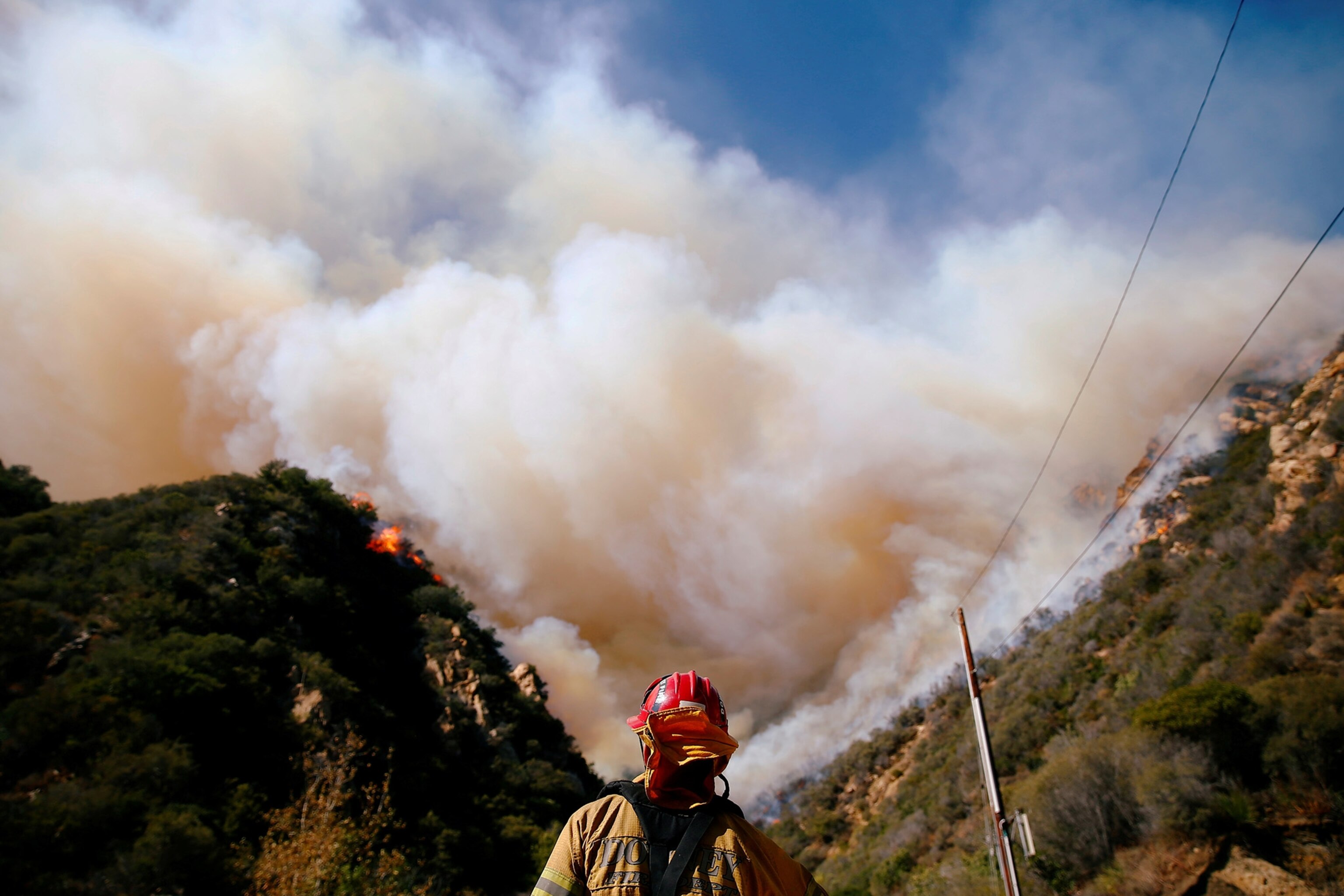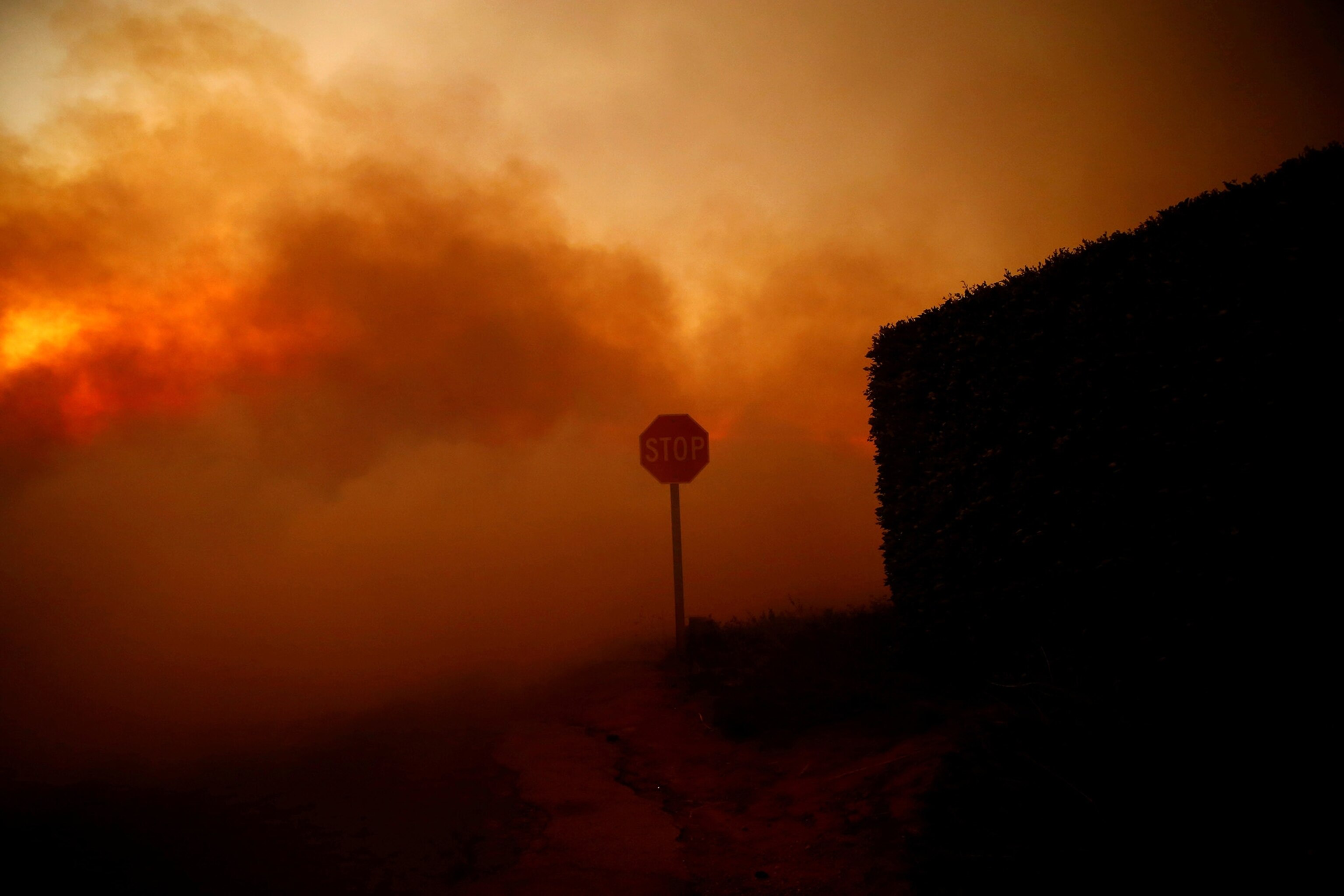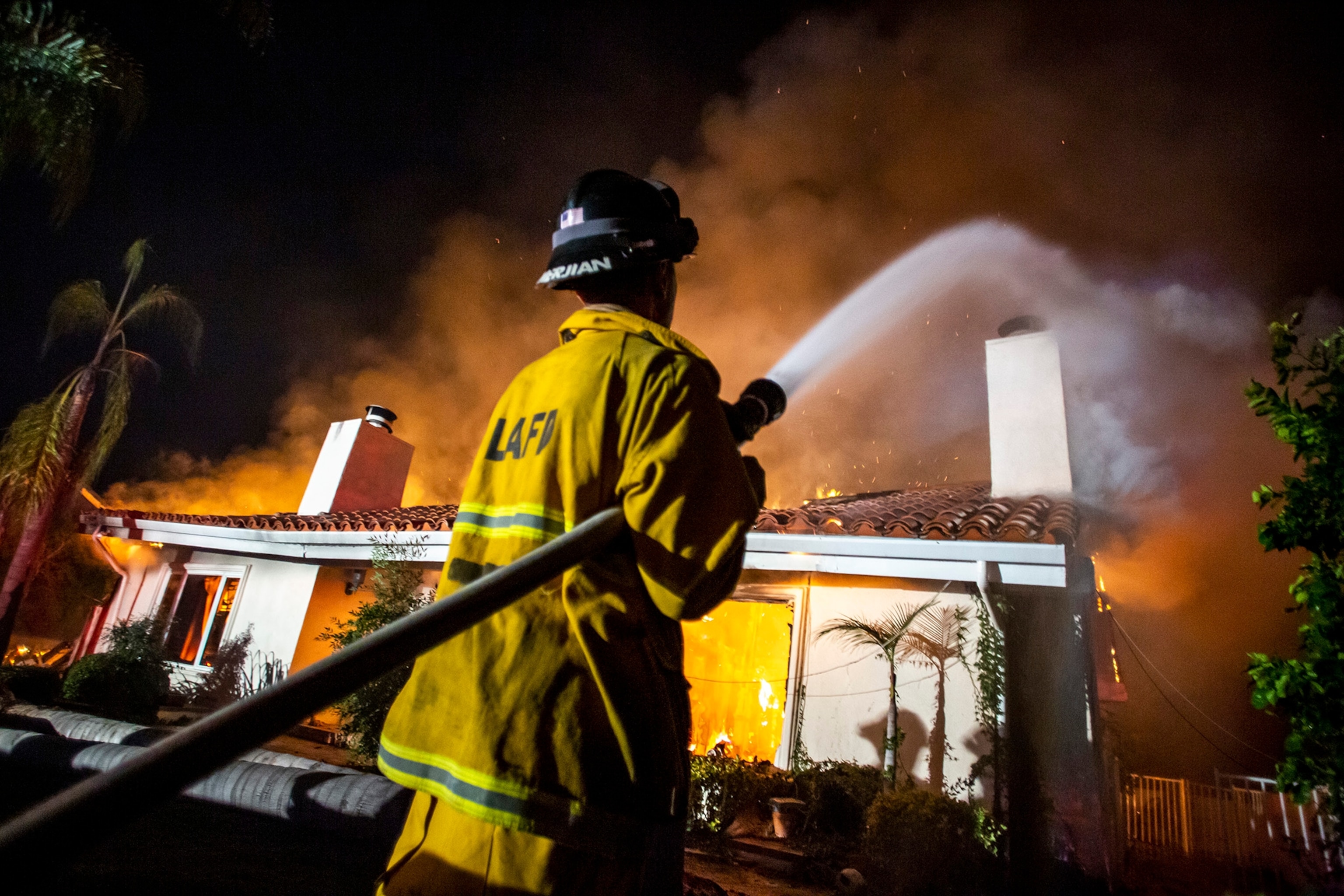Wildfires can move shockingly fast. Here’s how they start—and how to stop them.
In the past two decades, the number of Americans at risk of experiencing a wildfire has doubled. Learn what you need to do if one is near you.
In the wake of Maui's deadly wildfires—where many died, and a historic town once known as the capital of Hawaii's monarchy was destroyed—residents and tourists are reeling from the damage.
The fires that burned through the island were worsened by intense winds from a nearby hurricane and drought conditions. Some experts have also said invasive grasses not native to the island created more flammable conditions that fed the fire's flames. Hawaii is not historically known for wildfires, but—like many parts of the world—is seeing more intense fires because of climate change and mismanaged land.
Wildfires can burn millions of acres of land at shockingly fast speeds, consuming everything in their paths. These rolling flames travel up to 14 miles an hour, which converts to about a four-minute-mile pace, and can overtake the average human in minutes.
Destruction caused by wildfires in the United States has significantly increased in the last two decades. An average of 72,400 wildfires cleared an average of 7 million acres of U.S. land each year since 2000, double the number of acres scorched by wildfires in the 1990s. In 2015, the largest wildfire season recorded in U.S. history burned more than 10 million acres of land.
Because much of the U.S. is expected to get hotter and drier with climate change, wildfire risk is generally expected to rise. At the same time, as the population in the United States rises and people increasingly move into rural and wilderness areas, more homes and other structures are likely to be placed in harm’s way.
That’s why it’s critical to understand how wildfires get started, how to stop them, and what to do when they occur.
How wildfires start
Though they are classified by the Environmental Protection Agency as natural disasters, only 10 to 15 percent of wildfires occur on their own in nature. The other 85 to 90 percent result from human causes, including unattended camp and debris fires, discarded cigarettes, and arson.
Naturally occurring wildfires can spark during dry weather and droughts. In these conditions, normally green vegetation becomes bone-dry, flammable fuel; strong winds spread fire quickly; and warm temperatures encourage combustion. With these ingredients, the only thing missing is a spark—in the form of lightning, arson, a downed power line, or a burning campfire or cigarette—to wreak havoc.
Natural or man-made, three conditions must be present for a wildfire to burn: fuel, oxygen, and a heat source. Firefighters call these three elements the fire triangle.
Fuel is any flammable material surrounding a fire, including trees, grasses, brush, even homes. The greater an area's fuel load, the more intense the fire is likely to be. The most wildfire-prone state is California, which lost 2,569,386 acres of land to 7,396 wildfires in 2021.
Air supplies the oxygen a fire needs to burn. California wildfires are often made worse by the hot, dry Santa Ana winds, which can carry a spark for miles. In Hawaii, Hurricane Dorian's winds helped feed the flames burning on Maui.
Heat sources help spark the wildfire and bring fuel to temperatures hot enough to ignite. Lightning, burning campfires or cigarettes, and even the sun can all provide sufficient heat to spark a wildfire.
Violent infernos are most common in the western states, where heat, drought, and frequent thunderstorms create ripe conditions. Montana, Idaho, Wyoming, Washington, Colorado, Oregon, and California experience some of the worst conflagrations. Wildfires also occur around the world and in most of the 50 states.
How they are stopped
Firefighters battle blazes by depriving them of one or more of the fire triangle fundamentals. One traditional method is to douse existing fires with water and spray fire retardants. Firefighters also sometimes work in teams, often called hotshots, to clear vegetation from the land around a fire to contain and eventually starve it of fuel. The resulting tracts of land are called firebreaks.
Firefighters may also employ controlled burning, creating backfires, to stop a wildfire. This method involves fighting fire with fire. These prescribed—and controlled—fires remove undergrowth, brush, and litter from a forest, depriving an otherwise raging wildfire of fuel.
Benefits of wildfires
Although they can be dangerous to humans, naturally occurring wildfires play an integral role in nature. By burning dead or decaying matter, they can return otherwise trapped nutrients to the soil. They also act as a disinfectant, removing disease-ridden plants and harmful insects from an ecosystem.

Wildfires thin forest canopies and undergrowth, allowing sunlight to reach the forest floor and a new generation of seedlings to grow. In fact, some species of trees, like sequoias, rely on fire for their seeds to even open.
In Hawaii, however, invasive grasses not native to the state may have worsened Maui's fires. This flammable grass now covers about a quarter of Hawaii's total land area, and the average area burned by wildfires has grown 400 percent in the past 100 years, according to the Hawaii Wildfire Management Organization.
What to do in a wildfire
Wildfires devastate anything in their path. And while they are difficult to stop, there are many steps people can take before, during, and after wildfires to limit their damage.
Before:
- If you know a wildfire is traveling toward your area, the best thing to do is leave. Immediately.
- If you live in a fire-prone area, it's best to prepare ahead of time. Have an evacuation plan in mind and a “go bag” with emergency supplies already packed during fire season.
- Trim brush, weeds, and other potential fuels on your property, especially around your home.
- Put away grills, propane tanks, or other flammable materials that may be in your yard.
- Close all doors and windows and fill sinks, tubs, and other containers with water to discourage fire.
- Shut off natural gas, propane, or fuel oil supplies.
- When you purchase a home in a wildfire-prone area, avoid neighborhoods on slopes that are steep or barren, suggests the California Chaparral Institute. Although some people fear that houses near shrubs are more likely to burn, that’s not necessarily the case, the institute says. Rather, a landscape without vegetation can be the perfect runway for winds to bring embers, which are one of the biggest threats to homes during a wildfire.
- Wetting your roof may help reduce the risk of airborne embers catching, says the California Chaparral Institute. In fact, some people in fire-prone areas even install rooftop sprinklers for that purpose.
- If you cannot leave as a fire approaches, dial 911. Then don an N95 respirator to help reduce smoke and particle inhalation.
During:
- Listen for emergency alerts.
- Stay inside. Go to the safest building or room with the lowest smoke levels. Crouch low for the best air. If you don't have a mask, breathe through a wet cloth.
- If you are caught outside, try to find a body of water to crouch in. If you can't, find a depression with the least vegetation and lie low, covering yourself with wet blankets, clothes, or soil if possible.
After:
- Do not return until instructed to do so.
- Listen to authorities before drinking water from the area.
- Avoid items that are hot, smoky, or charred.
- Text friends and family, but don’t call. Lines may be busy.
- Wear a dust mask and document property damage.
- Beware of the risk of flooding, since trees and protective vegetation might have been removed, exposing loose soil.
You May Also Like
Go Further
Animals
- How can we protect grizzlies from their biggest threat—trains?How can we protect grizzlies from their biggest threat—trains?
- This ‘saber-toothed’ salmon wasn’t quite what we thoughtThis ‘saber-toothed’ salmon wasn’t quite what we thought
- Why this rhino-zebra friendship makes perfect senseWhy this rhino-zebra friendship makes perfect sense
- When did bioluminescence evolve? It’s older than we thought.When did bioluminescence evolve? It’s older than we thought.
- Soy, skim … spider. Are any of these technically milk?Soy, skim … spider. Are any of these technically milk?
Environment
- Are the Great Lakes the key to solving America’s emissions conundrum?Are the Great Lakes the key to solving America’s emissions conundrum?
- The world’s historic sites face climate change. Can Petra lead the way?The world’s historic sites face climate change. Can Petra lead the way?
- This pristine piece of the Amazon shows nature’s resilienceThis pristine piece of the Amazon shows nature’s resilience
- Listen to 30 years of climate change transformed into haunting musicListen to 30 years of climate change transformed into haunting music
History & Culture
- Meet the original members of the tortured poets departmentMeet the original members of the tortured poets department
- Séances at the White House? Why these first ladies turned to the occultSéances at the White House? Why these first ladies turned to the occult
- Gambling is everywhere now. When is that a problem?Gambling is everywhere now. When is that a problem?
- Beauty is pain—at least it was in 17th-century SpainBeauty is pain—at least it was in 17th-century Spain
Science
- Here's how astronomers found one of the rarest phenomenons in spaceHere's how astronomers found one of the rarest phenomenons in space
- Not an extrovert or introvert? There’s a word for that.Not an extrovert or introvert? There’s a word for that.
- NASA has a plan to clean up space junk—but is going green enough?NASA has a plan to clean up space junk—but is going green enough?
- Soy, skim … spider. Are any of these technically milk?Soy, skim … spider. Are any of these technically milk?
Travel
- Could Mexico's Chepe Express be the ultimate slow rail adventure?Could Mexico's Chepe Express be the ultimate slow rail adventure?
- What it's like to hike the Camino del Mayab in MexicoWhat it's like to hike the Camino del Mayab in Mexico
























